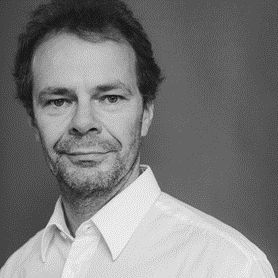Comparative Biology of Centrosomal Structures in Eukaryotes
A special issue of Cells (ISSN 2073-4409). This special issue belongs to the section "Intracellular and Plasma Membranes".
Deadline for manuscript submissions: closed (30 June 2018) | Viewed by 1051
Special Issue Editor
Interests: microtubules; centrosome; nucleus; lamins
Special Issues, Collections and Topics in MDPI journals
Special Issue Information
Dear Colleagues,
Centrosome-like organelles are the main microtubule-organizing center in animals, fungi and lower eukaryotes. They duplicate once, and only once, in the cell cycle prior to mitosis, and during mitosis they are critically involved in spindle formation, chromosome segregation and cytokinesis. Due to their central role in microtubule organization, centrosomes are also crucial for cell architecture in all organisms using microtubules for organelle positioning. They generally consist of a central, highly organized structure serving as a scaffold for microtubule nucleation complexes. Different types of centrosomal organelles have emerged during eukaryotic evolution. The most common type, the centriole-containing centrosome, is found among Opisthokonta in animals, in some Amoebozoa and among Bikonta, for example, in lower plants. All these organisms use centrioles also as basal bodies of cilia. However, organisms having lost locomotion by cilia or flagellae, such as many fungi and amoebae, contain no centrioles and possess acentriolar centrosomes, which are sometimes called nucleus-associated bodies (NABs) or spindle pole bodies (SPBs). In the light of evolution, our current understanding of centrosome biogenesis and function is primarily based on studies in only one eukaryotic supergroup, the Opisthokonta, which includes metazoans and fungi. This Special Issue of Cells should improve our understanding of centrosome function and evolution by including researchers working not only with Opisthokonts but also model organisms from other eukaryotic supergroups, i.e., Amoebozoa, Archaeplastida, Excavata and SAR (Stramenopile, Alveolata, Rhizaria). Comparing centrosome structure, function and association with nuclear structures will also improve our understanding of ancient centrosomal functions that are independent of the formation of centrioles.
Prof. Dr. Ralph Gräf
Guest Editor
Manuscript Submission Information
Manuscripts should be submitted online at www.mdpi.com by registering and logging in to this website. Once you are registered, click here to go to the submission form. Manuscripts can be submitted until the deadline. All submissions that pass pre-check are peer-reviewed. Accepted papers will be published continuously in the journal (as soon as accepted) and will be listed together on the special issue website. Research articles, review articles as well as short communications are invited. For planned papers, a title and short abstract (about 100 words) can be sent to the Editorial Office for announcement on this website.
Submitted manuscripts should not have been published previously, nor be under consideration for publication elsewhere (except conference proceedings papers). All manuscripts are thoroughly refereed through a single-blind peer-review process. A guide for authors and other relevant information for submission of manuscripts is available on the Instructions for Authors page. Cells is an international peer-reviewed open access semimonthly journal published by MDPI.
Please visit the Instructions for Authors page before submitting a manuscript. The Article Processing Charge (APC) for publication in this open access journal is 2700 CHF (Swiss Francs). Submitted papers should be well formatted and use good English. Authors may use MDPI's English editing service prior to publication or during author revisions.
Keywords
- centrosome
- spindle-pole body
- nucleus associated body
- mitosis






